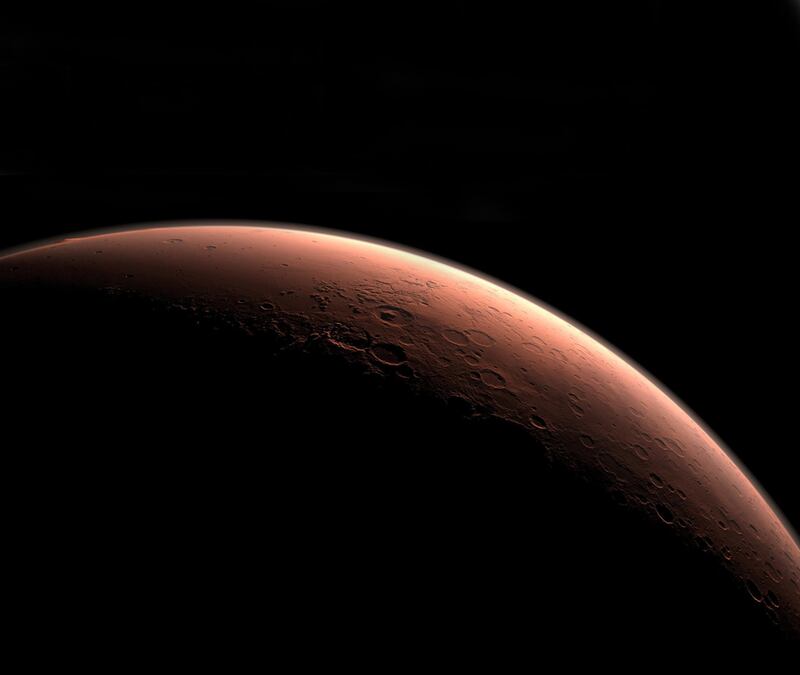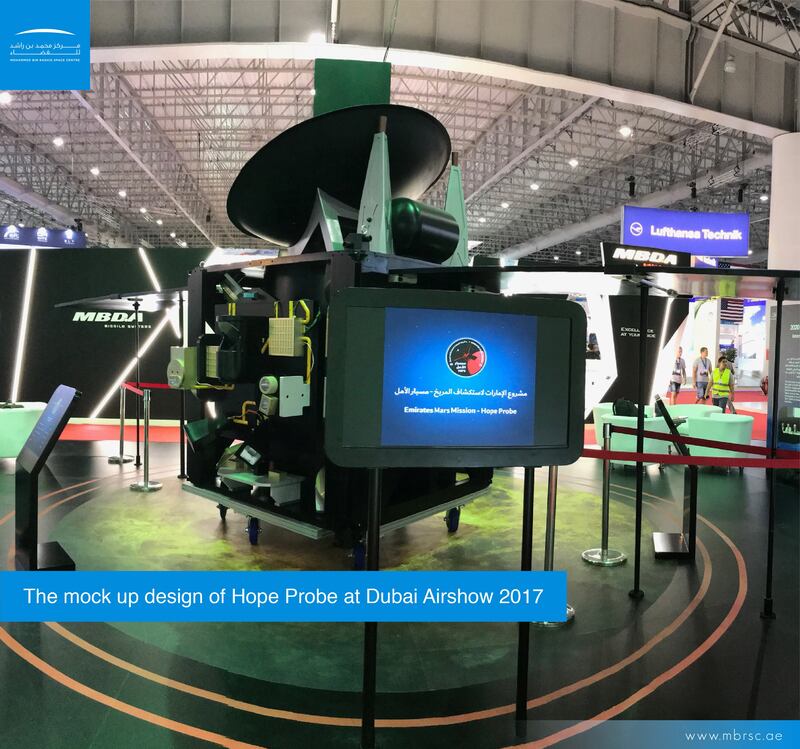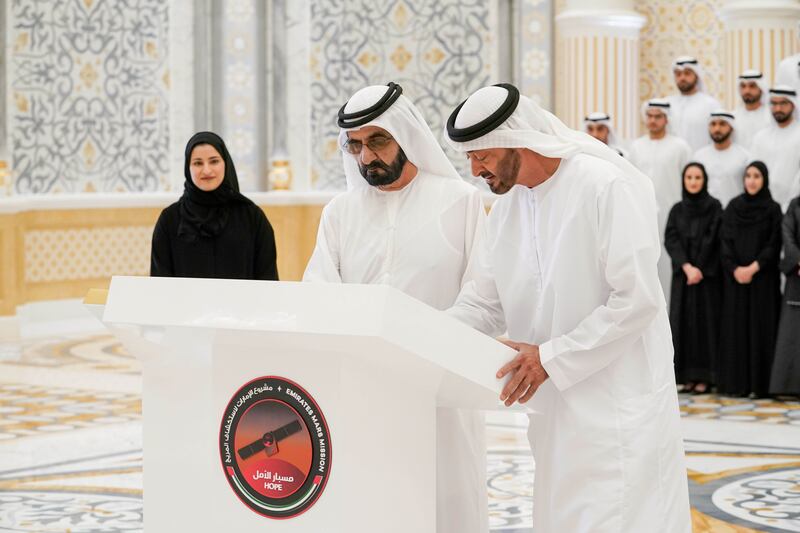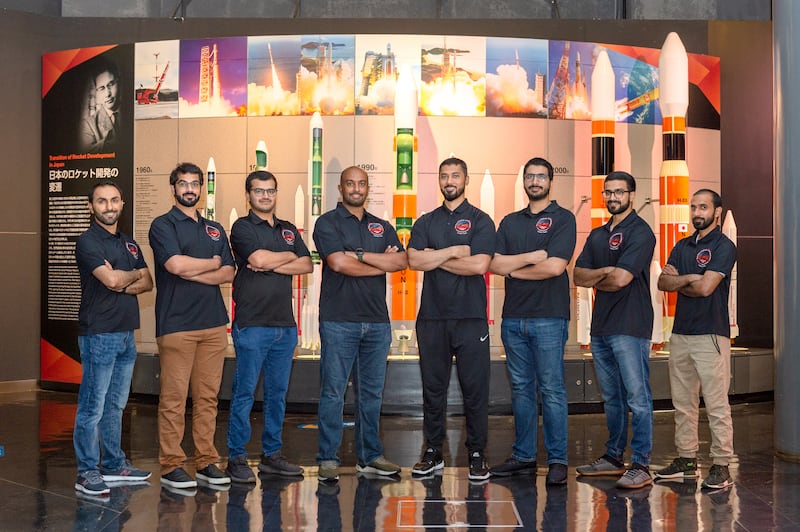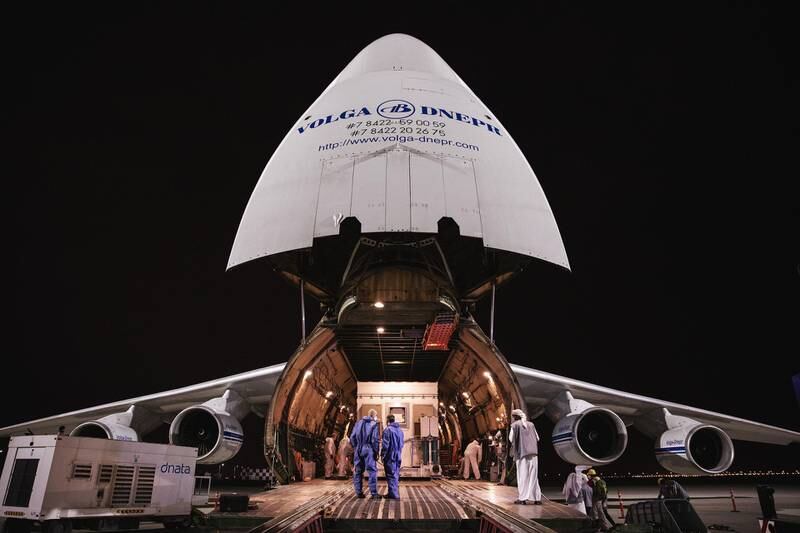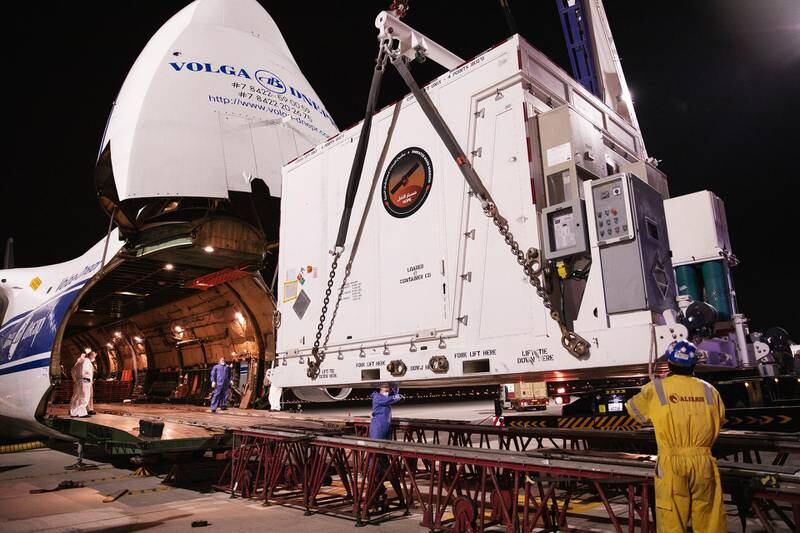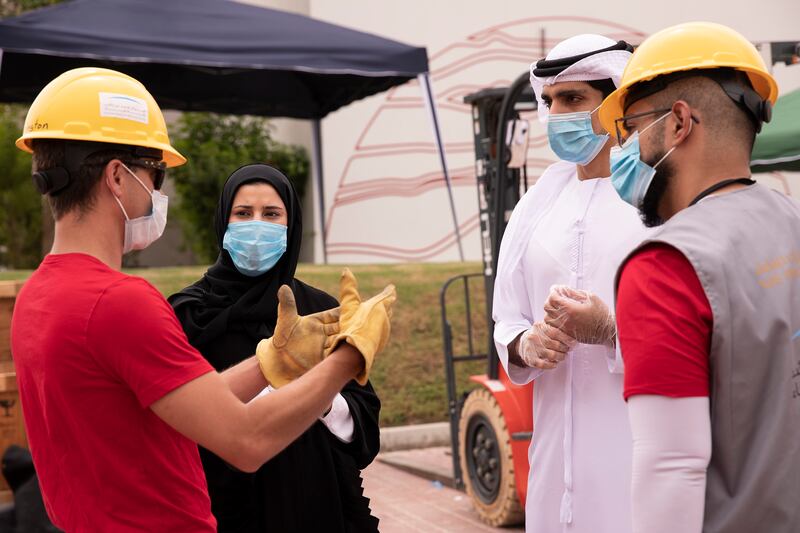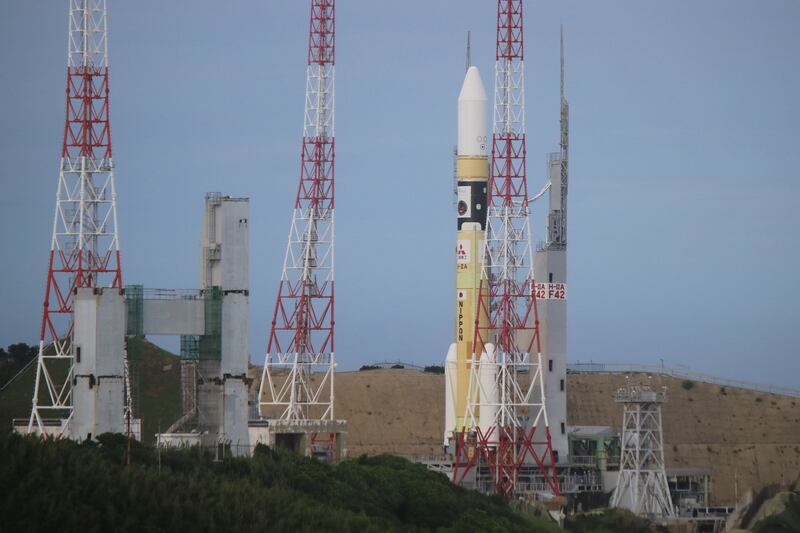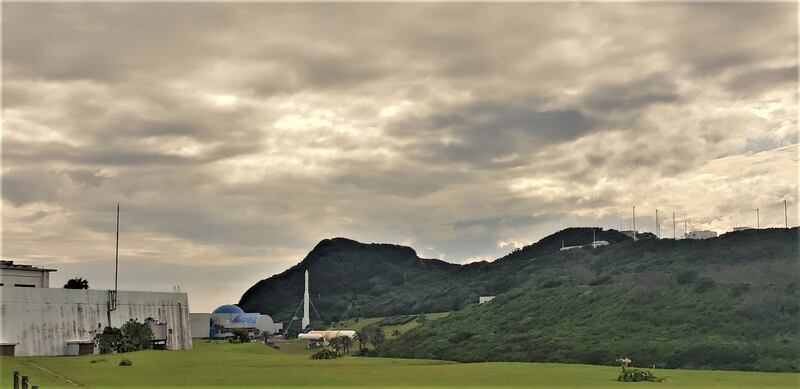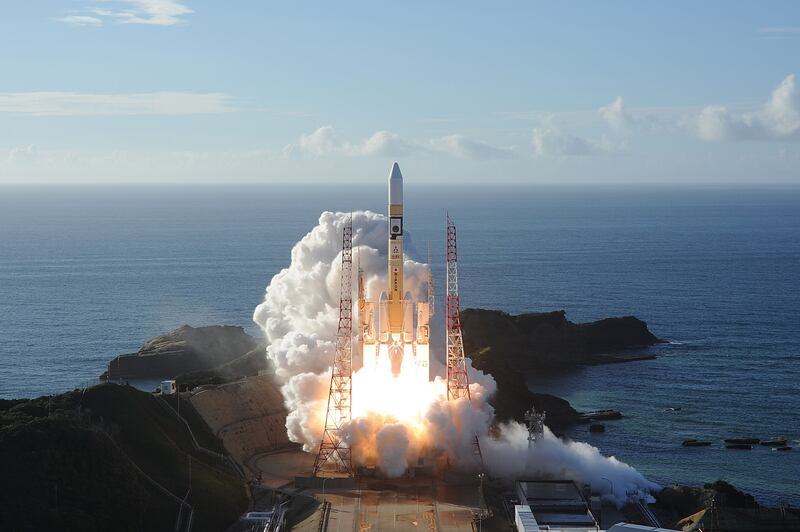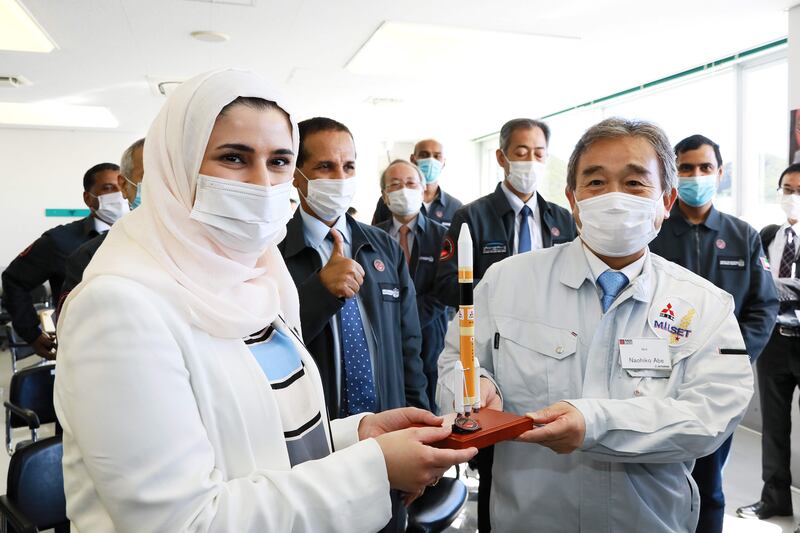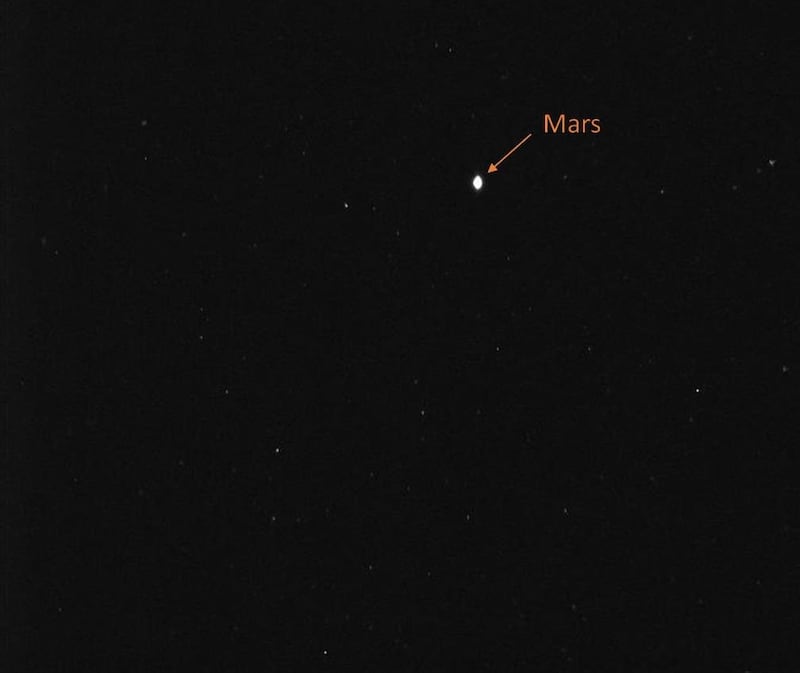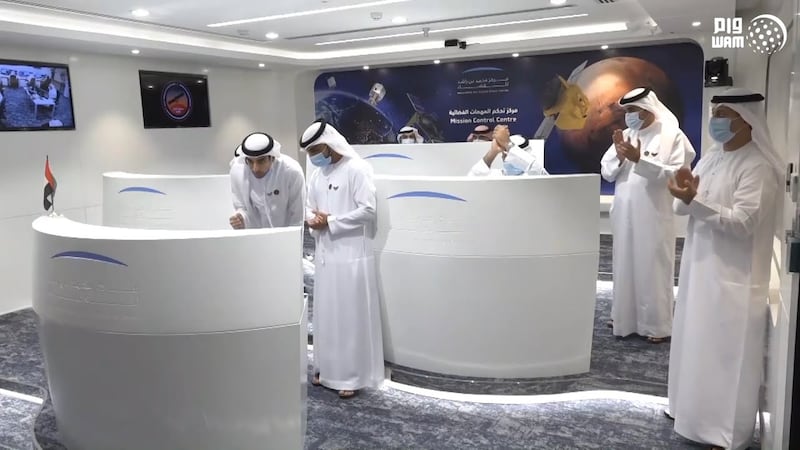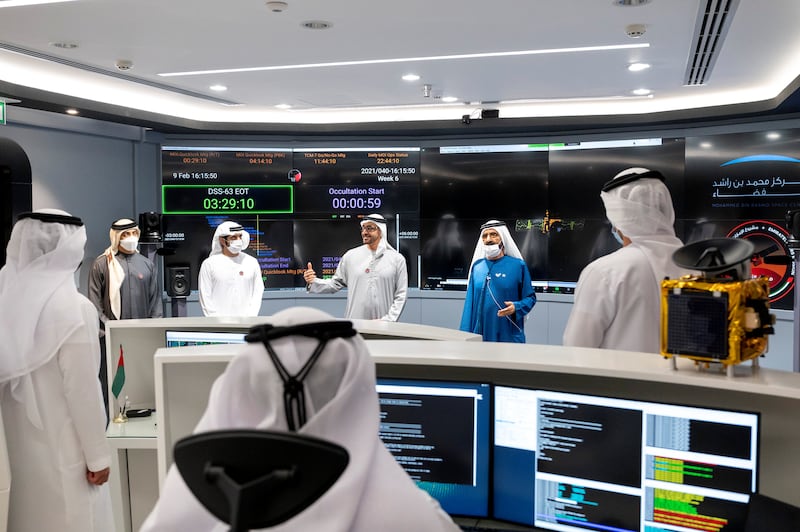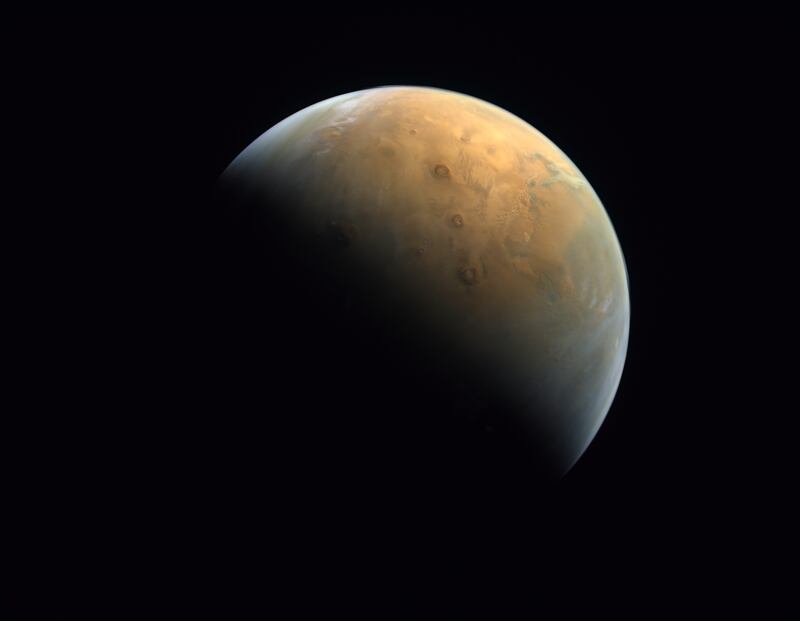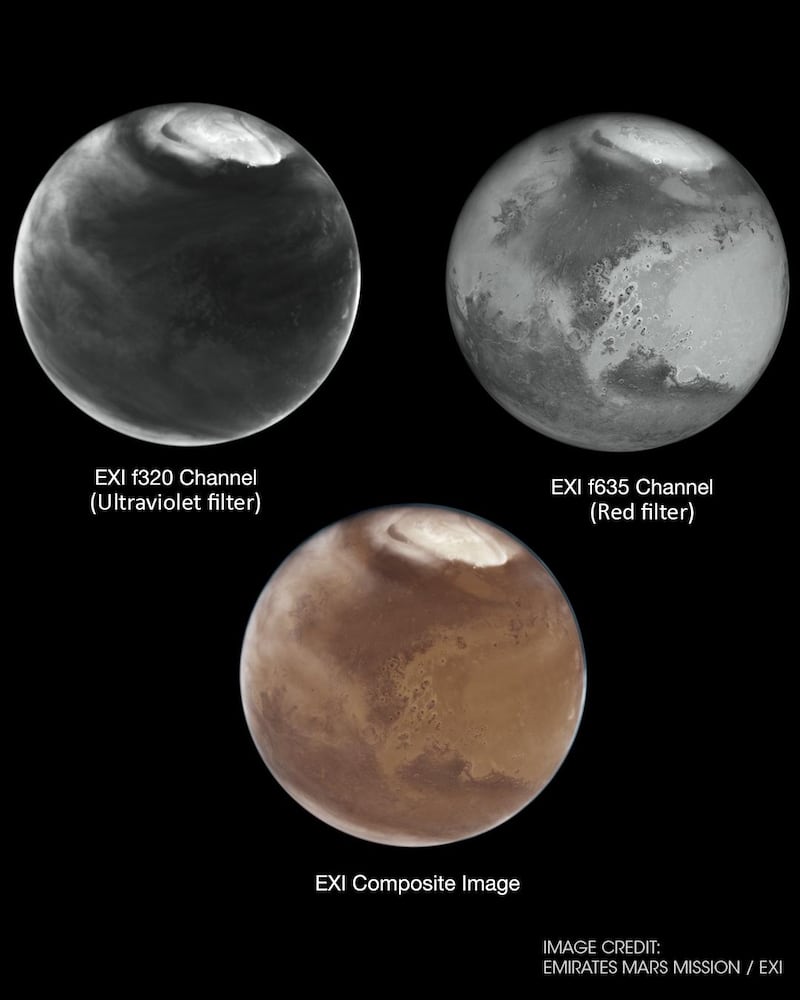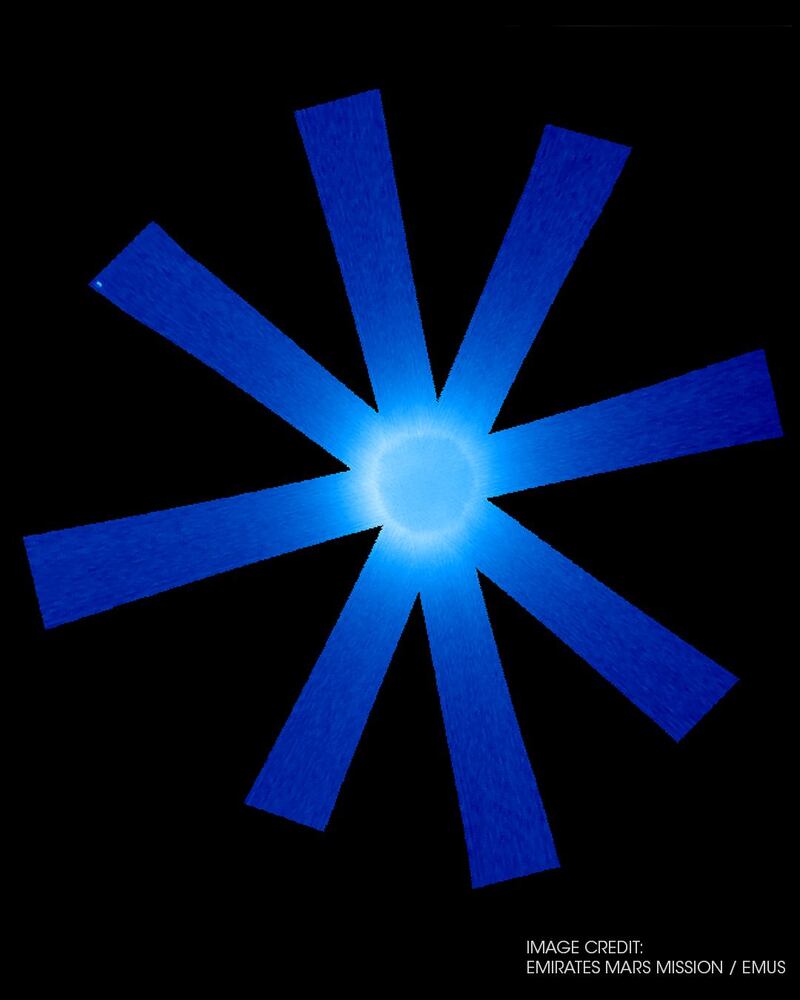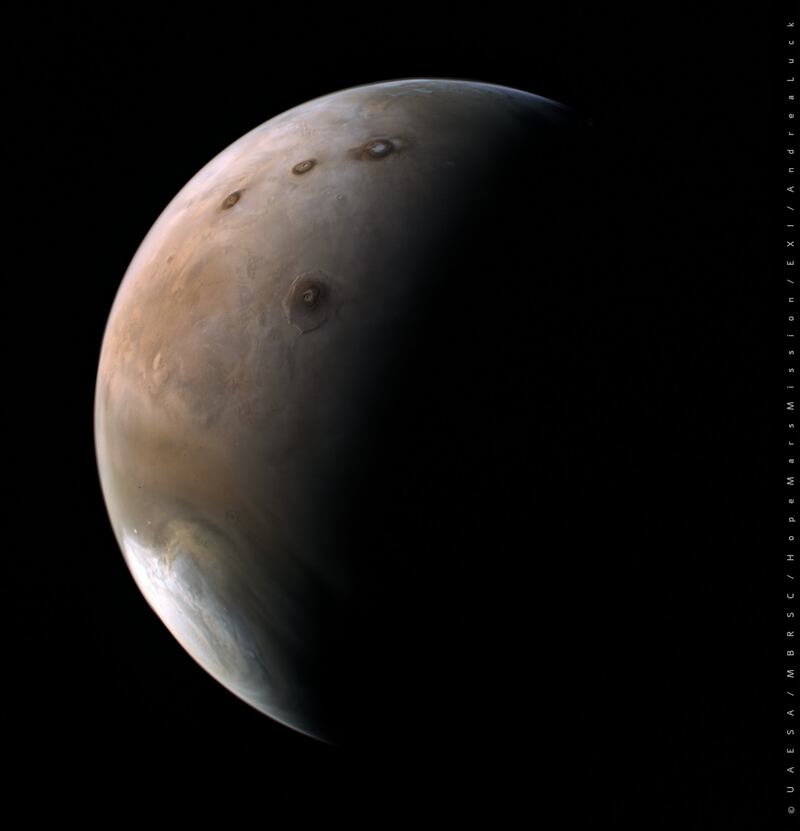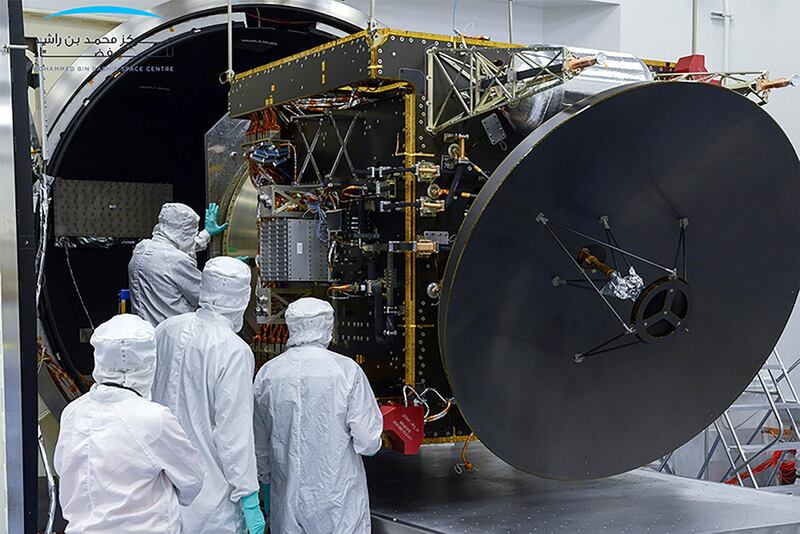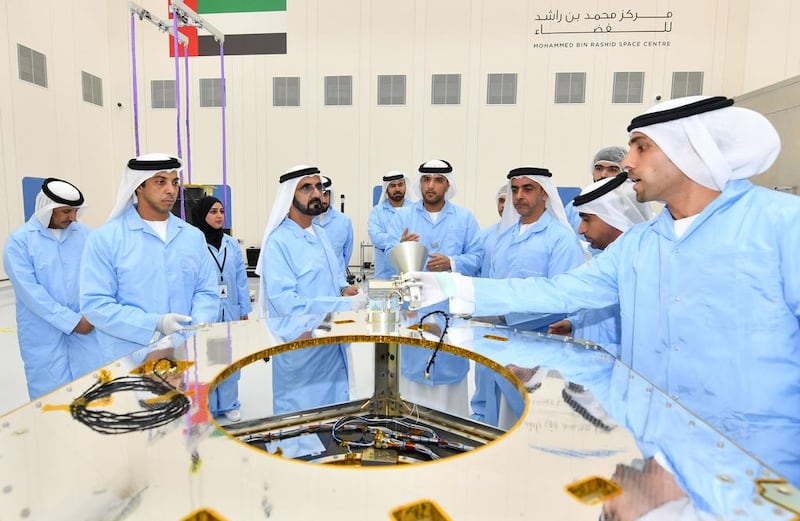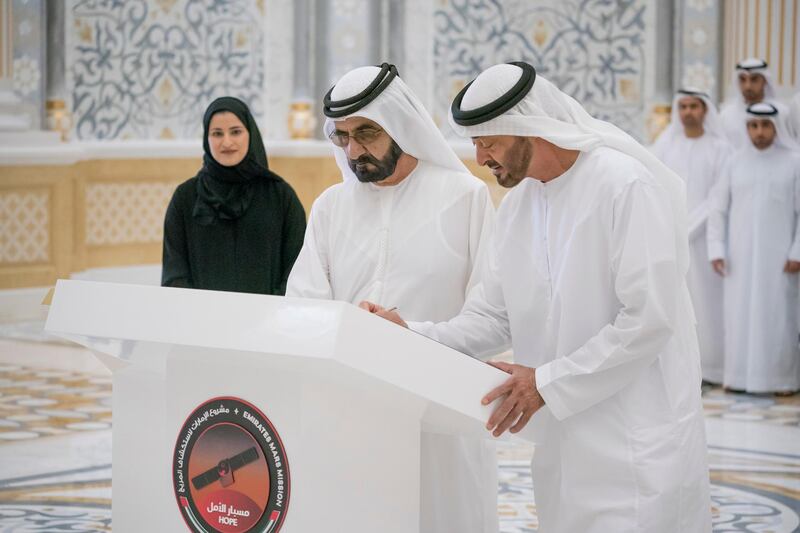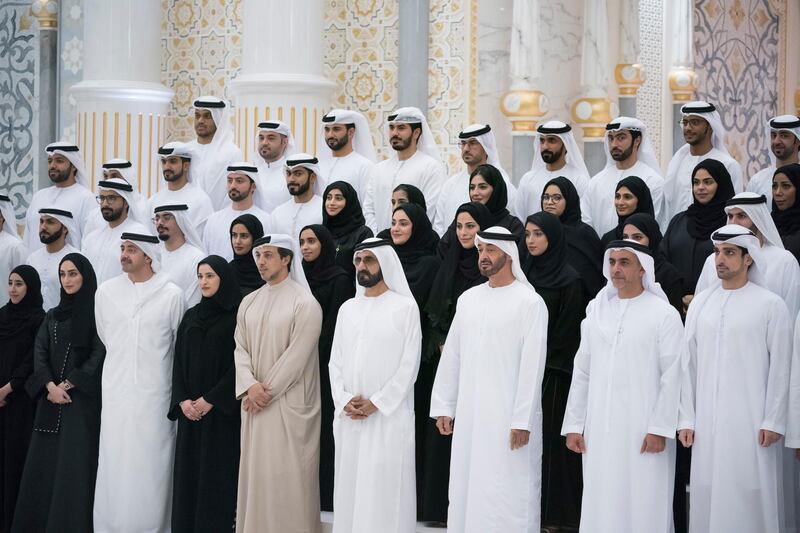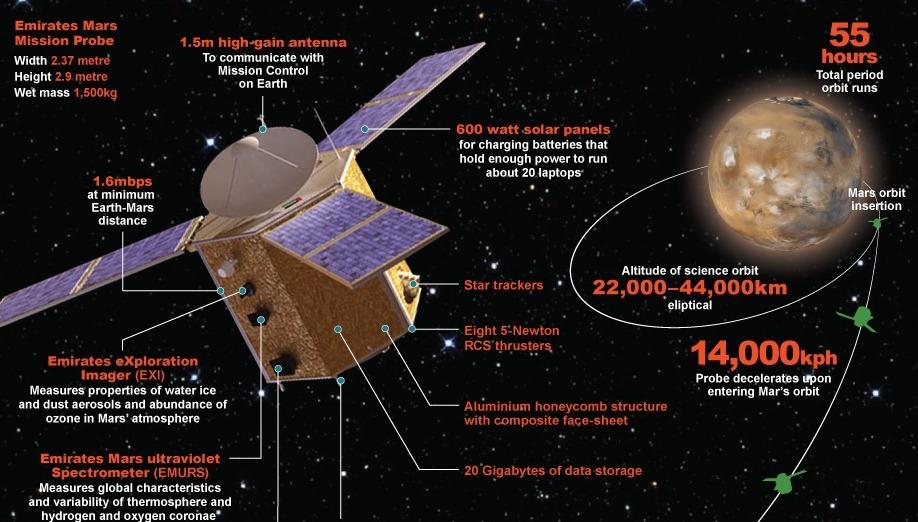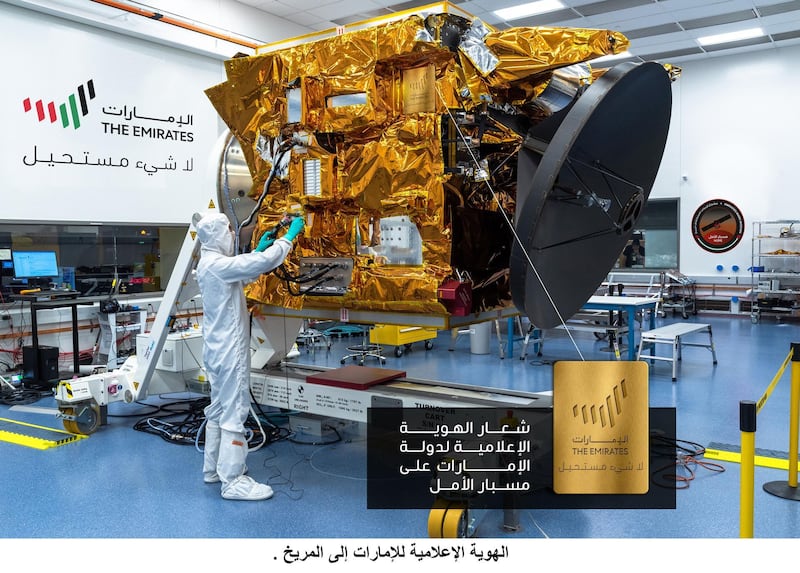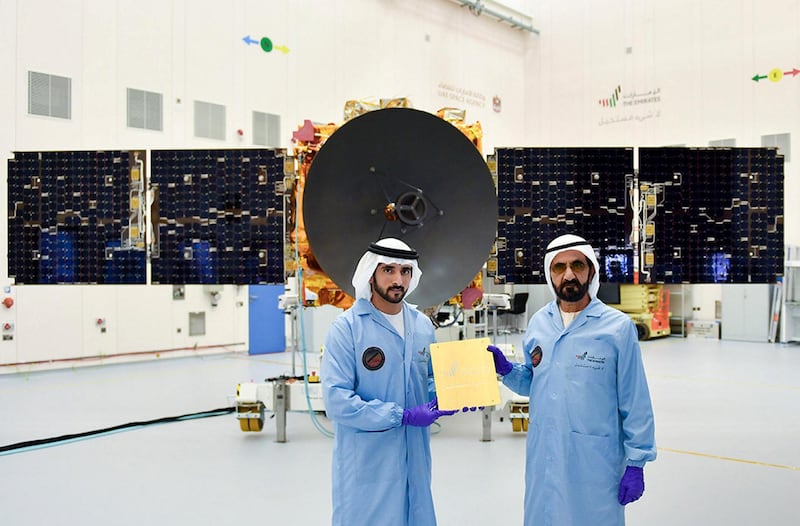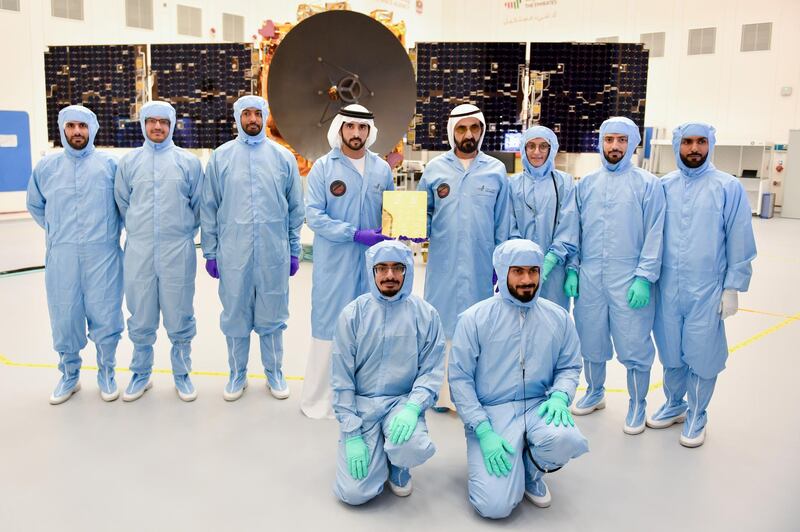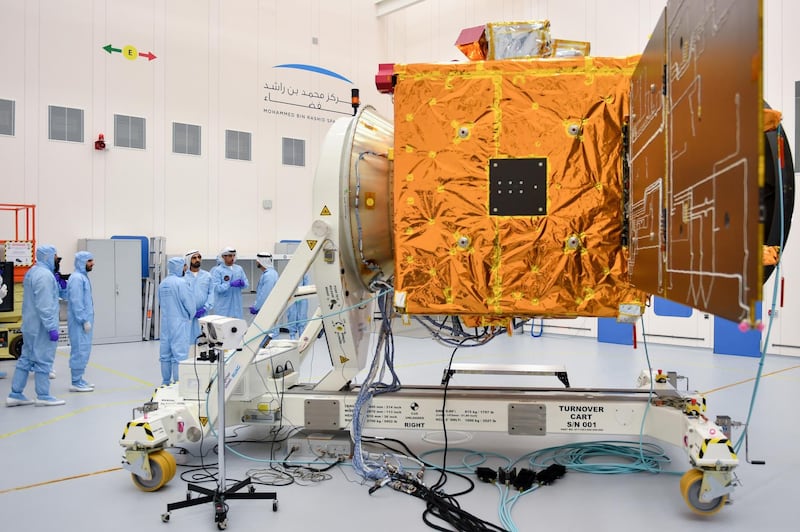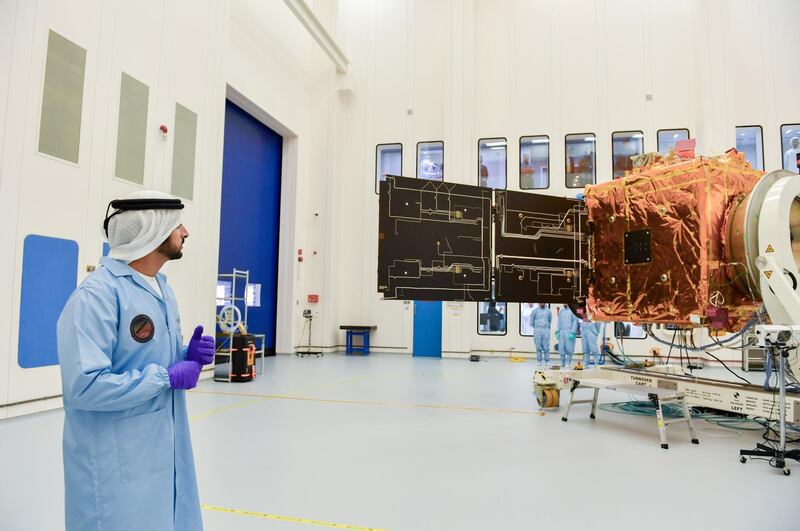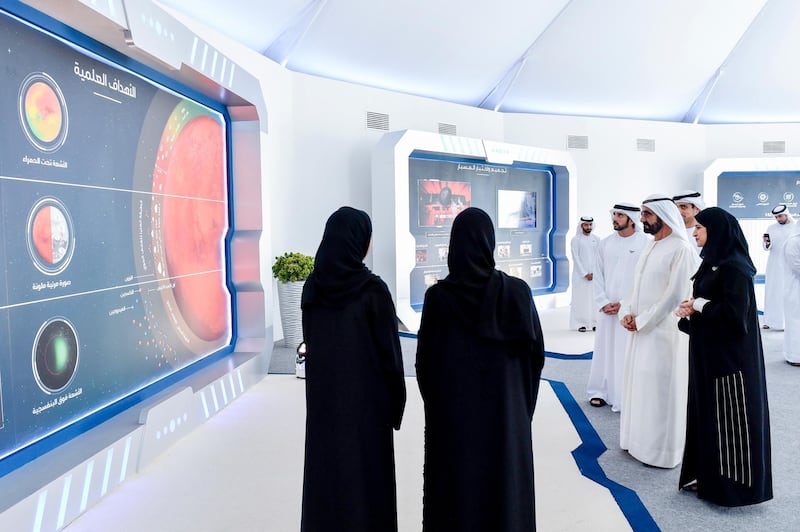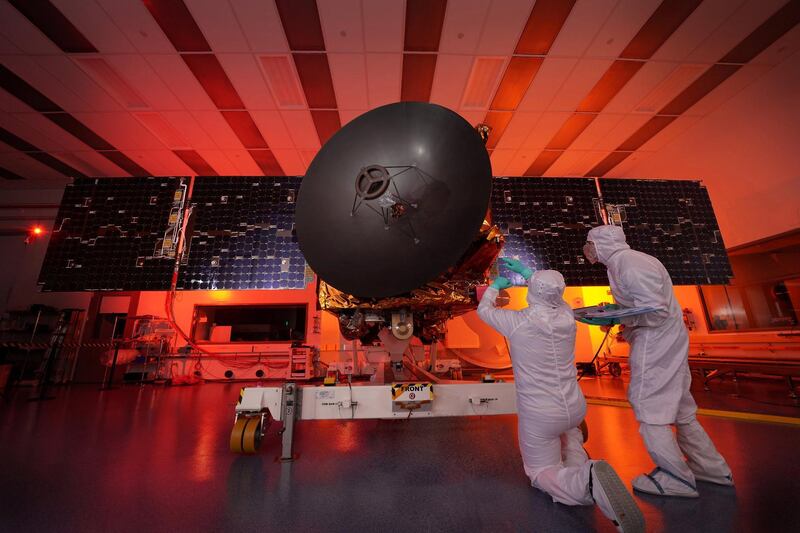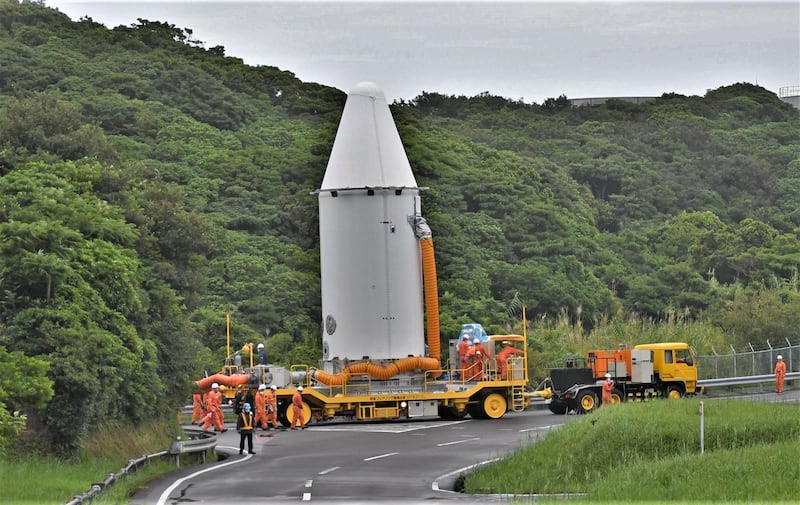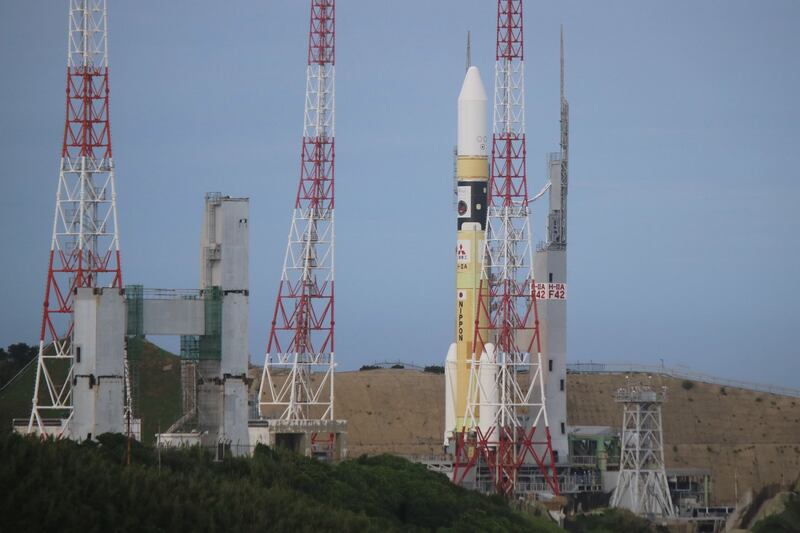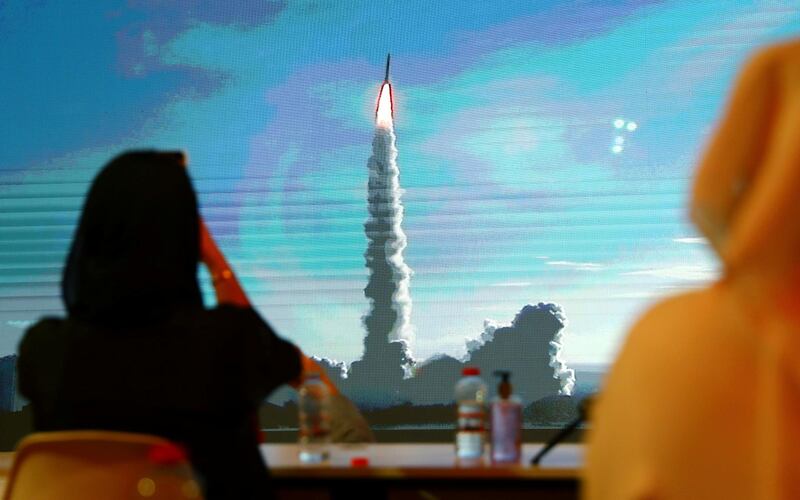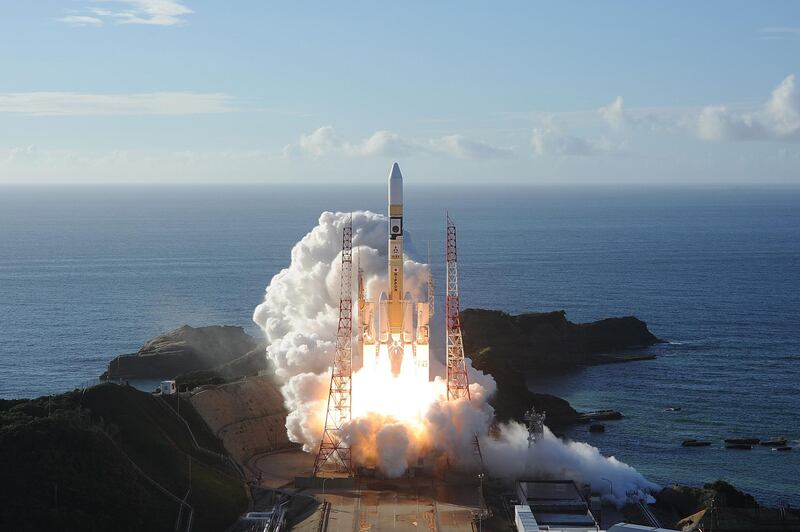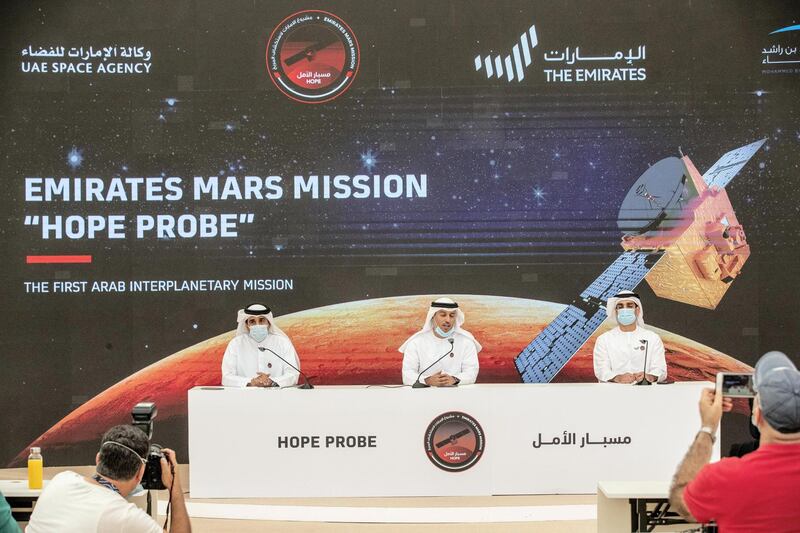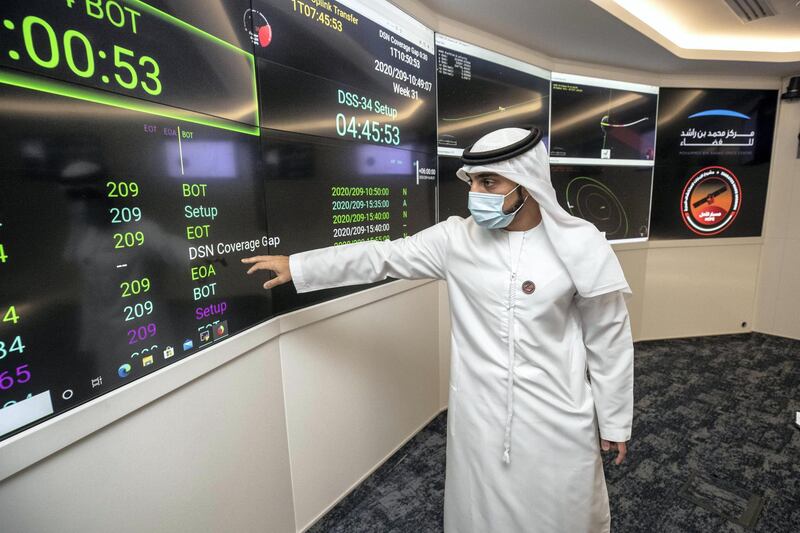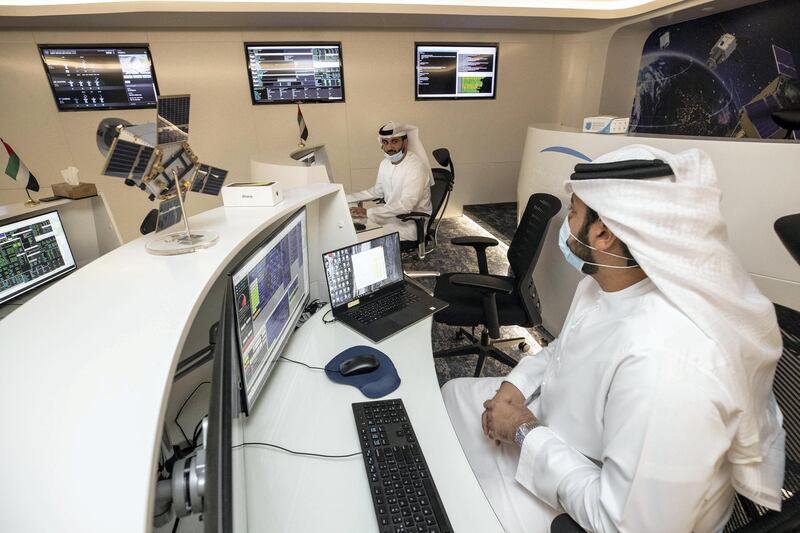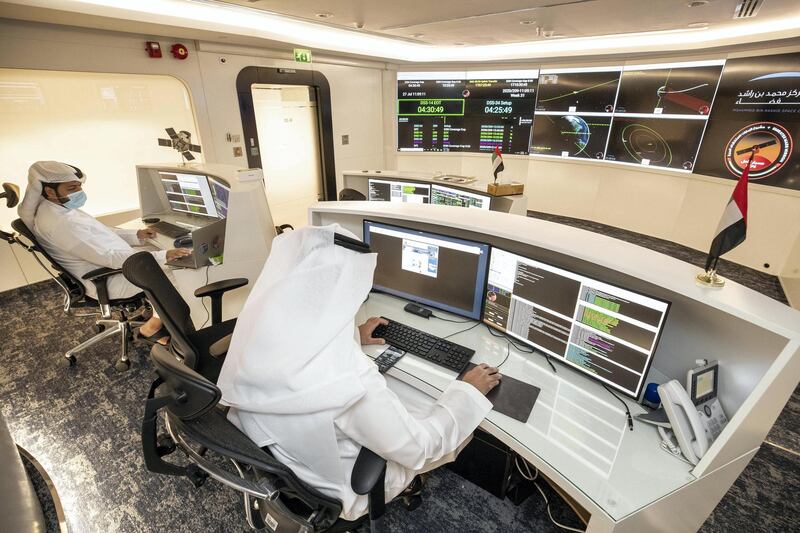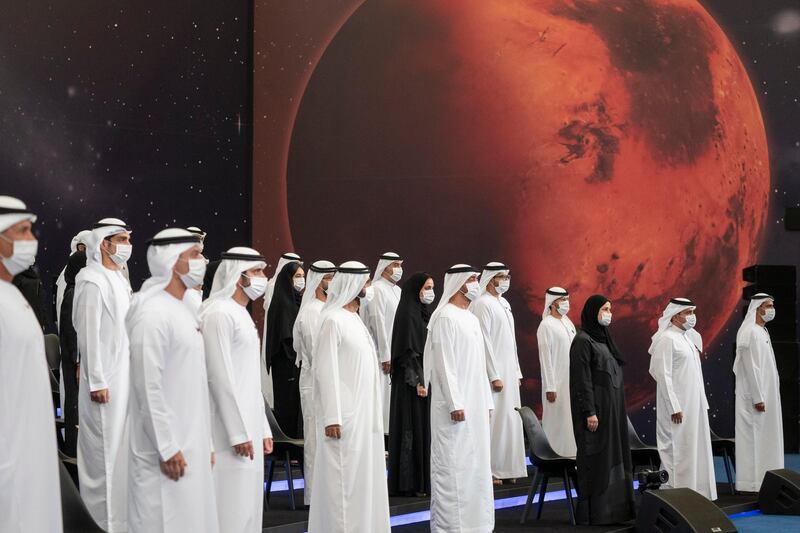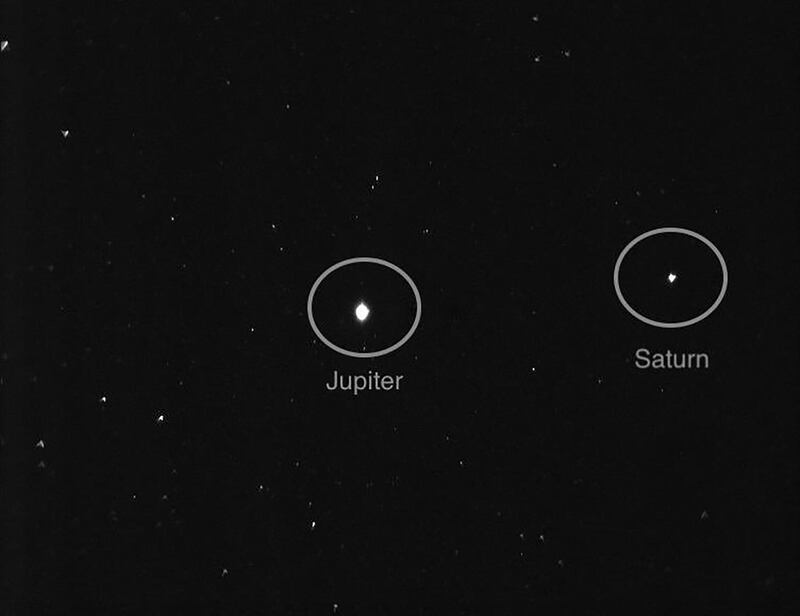One year on since the UAE reached Mars and etched its name in the record books as the first Arab country to achieve the daring feat, the mission continues to gather valuable data and share never-before-seen images with the world.
A global audience watched with bated breath on February 9 last year when the Hope spacecraft entered the Red Planet’s orbit.
The UAE’s space agency became only the fifth in the world to accomplish the task.
Omran Sharaf, the mission director, and his team of engineers tracked the spacecraft from ground control at the Mohammed bin Rashid Space Centre as it entered orbit.
“To the people of the UAE, to the Arab and Muslim nations, we announce the successful arrival to Mars orbit. Praise be to God,” Mr Sharaf announced in a live broadcast at the time.
Since then, the probe has been beaming back stunning images of the planet that has revealed its geographical features and atmospheric conditions.
Scientists around the world have been benefiting from the treasure trove of data the mission has released so far, including images of the planet’s mysterious aurora and abundance of oxygen.
Speaking to The National on the special occasion, Mr Sharaf said the mission is only halfway completed and there are still more discoveries to be made.
Hope Probe's journey so far
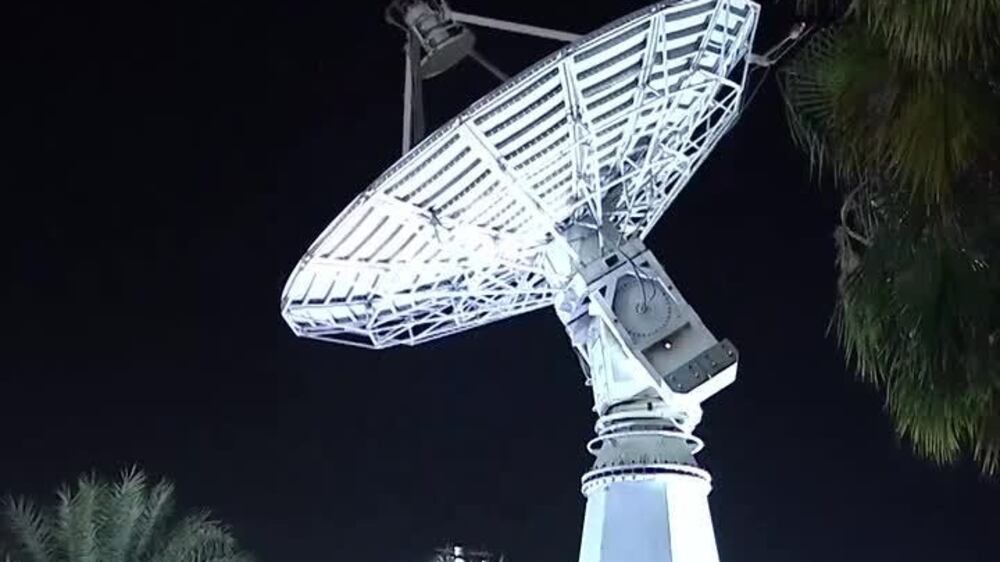
“There’s definitely a feeling of happiness and positivity around what's going to come in the future,” he said.
“When we were young, we never thought that we were going to work on a mission that will be sent to explore Mars.
“For me, personally, having the opportunity to work on it and to leave a fingerprint on something that put our name on Mars has been a humbling experience.”
More than 200 engineers and scientists contributed to the mission, including three US universities that helped build the spacecraft and science goals.
Mr Sharaf said reaching the Red Planet has helped them “think outside of the box” and aim for even more challenging tasks.
Last year, the UAE Space Agency announced a mission to the main asteroid belt and a Venus fly-by.
The ambitious project involves a spacecraft that would slingshot itself around Venus and then Earth by using their gravity, with a goal to reach the asteroid belt between Mars and Jupiter.
It would then fly past seven asteroids and attempt a landing on the last one.
“The asteroid belt and Venus mission is based on the Mars mission experience and platform. It’s a continuation of the initial investment by the government,” Mr Sharaf said.
On the one-year anniversary of the UAE reaching Mars, The National highlights some of the key moments of the mission.
July 16, 2014: UAE announces mission to Mars
It was an announcement no one was expecting, but soon becomes the foundation for the nation’s space programme.
The news comes years before the country even had an astronaut programme, but many young Emirati engineers who dreamt of a career in the space sector welcome the mission.
Sheikh Mohammed bin Rashid, Vice President and Ruler of Dubai, announces the news on Twitter.
“Today we announce two epic projects in our history: establishing UAE Space Agency and sending the first Arab spaceship to Mars by 2021,” he tweeted.
The goal is to reach the Red Planet in the same year of the Emirates’ Golden Jubilee.
May 8, 2015: details of mission unveiled
During a glittering ceremony held at the Qasr Al Watan in Abu Dhabi, the name of the spacecraft and timeline of the mission is unveiled.
A video detailing the science goals was released on Sheikh Mohammed’s Twitter account two days beforehand, and is discussed further during the ceremony.
The Ruler of Dubai said the spacecraft was named Hope because it sent a message of optimism to young Arabs.
November 12, 2017: Prototype of Hope probe unveiled
At the Dubai Airshow, a prototype of the Mars spacecraft goes on display for the first time.
It is an opportunity for the engineers to show the progress of the mission.
January 21, 2019: UAE announces launch date
A launch window between July 14 and August 3, 2020, is announced.
The spacecraft would lift off from Japan’s Tanegashima Space Centre, aboard the HII-A rocket.
On May 19, it is announced that the first launch attempt would be made on July 15, 2020.
April 5, 2020: Covid-19 pandemic causes disruptions
Six years of planning, but no one saw what was coming next.
The pandemic did not cause any launch delays, but it is the reason why some of the engineers leave for Japan early to quarantine.
Some of the team members stay behind because only a limited number of people are allowed on site.
They live in Japan for more than four months to make sure the launch goes ahead on time.
April 25, 2020: Delivering Hope to a faraway Japanese island
It was a journey over land, sea and air that took the UAE’s Mars probe from a Dubai suburb to the far side of the world. But after 83 hours, the space orbiter arrives on Tanegashima Island — 1,000 kilometres south of the capital Tokyo.
The vehicle travelled in a special container to avoid damage and flew on one of the world's largest cargo planes.
July 14, 2020: Turbulent weather causes delays
The mission survives the pandemic, but Mother Nature has its own plans.
Heavy rainfall and strong winds delay the mission twice, including on July 15 and July 17.
July 20, 2020: Hope lifts off
At last, the mission lifts off.
The Hope probe begins its 493 million kilometres-long journey to Mars.
February 9, 2021: Hope enters Mars orbit
About 200 days later, the spacecraft successfully reaches Mars.
Landmarks across the Arab world light up in red to celebrate the historic achievement.
Hours later, China also manages to reach Mars with its Tianwen-1 spacecraft.
February 14, 2021: First image of Mars
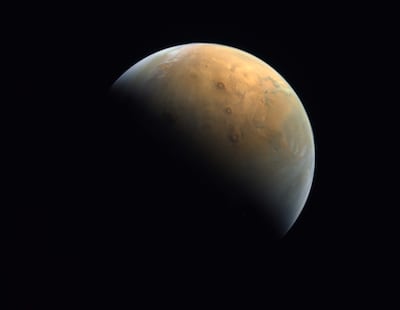
Sheikh Mohammed tweets the first image of Mars captured by the Hope probe while in orbit.
Taken 24,700 kilometres above the surface of the Red Planet, the image showed the solar system’s largest volcano, Olympus Mons, at sunrise.
October 1, 2021: First set of data released
A total of 110 gigabytes of data, including images and science readings of the atmosphere and weather, is released for free to the public.
The UAE promises to release a new set every three months.
January 1, 2022: Second set of data released
The latest release of data sheds new light on some of the planet's key geographical features, such as Olympus Mons, the largest volcano in the solar system, and Valles Marineris, a canyon network that is 4,000km long and reaches depths of up to 7km.
So far, 312gb of data has been released.
